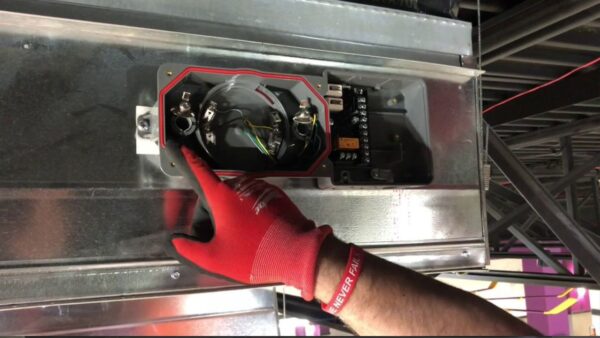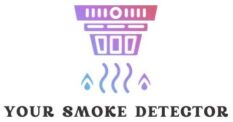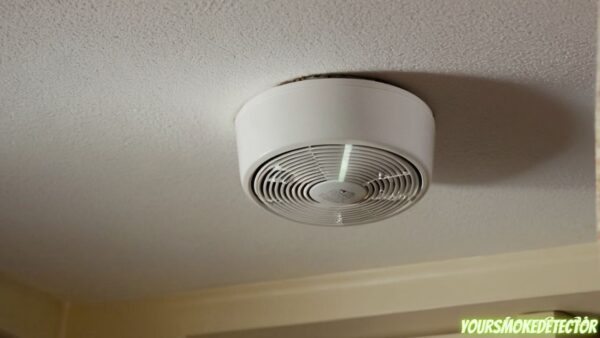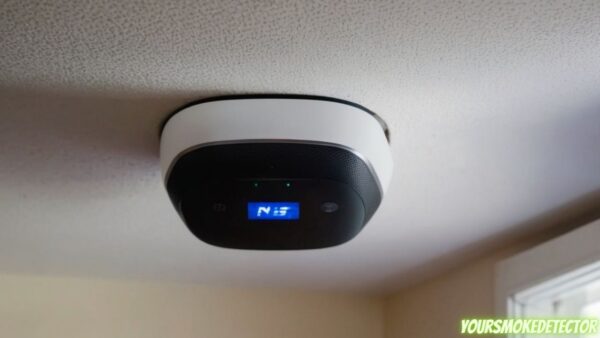Duct smoke detectors, often an overlooked yet integral component of fire protection systems, play a pivotal role in safeguarding our lives and properties from the devastating effects of fire.
Predominantly installed in heating, ventilation, and air conditioning (HVAC) systems, these detectors are designed to sense smoke within the ductwork, triggering a response to prevent the spread of toxic gases and fire.

This comprehensive guide seeks to shed light on the importance, functionality, installation, and maintenance of duct smoke detectors, arming you with the knowledge necessary to enhance your building’s safety.
| Feature | Description |
|---|---|
| Detection Method | Photoelectric or ionization |
| Sensitivity Adjustment | Adjustable sensitivity settings for different environments |
| Airflow Monitoring | Monitors airflow in the duct system |
| Alarm Signaling | Audible alarm, visual indicators, and/or relay outputs |
| Power Requirements | Voltage and current specifications |
| Compatibility | Compatible with various HVAC systems and duct sizes |
| Communication Protocols | Integration with building automation systems |
| Testing Mechanism | Manual or automatic testing features |
| Remote Monitoring | Ability to be monitored remotely via a central system |
| Enclosure Rating | Protection against dust, moisture, and environmental factors |
| Operating Temperature | Suitable temperature range for proper functionality |
| Installation Requirements | Mounting specifications and clearances |
| Certifications | Compliance with industry standards and regulations |
| Maintenance Needs | Recommended maintenance schedule and procedures |
| False Alarm Prevention | Advanced features to reduce false alarms |
| Diagnostic Capabilities | Self-diagnosis and reporting of system health |
| Integration with Fire Alarm System | Compatibility and communication with the fire alarm system |
| Size and Dimensions | Compact design for easy installation in various duct sizes |
| Wiring Configuration | Wiring requirements and options for power and signaling |
Duct Smoke Detector

1. Understanding the Functionality of Duct Smoke Detectors
A Duct Smoke Detector, as the name suggests, gets installed within heating, ventilation, and air conditioning (HVAC) ducts.
Its fundamental role is to detect smoke or any signs of fire within the ducts and shut down the system to prevent smoke from spreading throughout the building.
Essentially, it acts as a first-line defense mechanism against potential fire hazards in HVAC systems, providing critical time for building occupants to evacuate.
Its operation is simple yet effective; when smoke or heat is detected, the device triggers an alarm, shutting down the HVAC system.
This is a vital safety feature in large buildings where rapid smoke or fire spread could have disastrous consequences.
2. Key Components of a Duct Smoke Detector
A duct smoke detector primarily consists of four crucial elements.
- Firstly, the detector housing – a protective enclosure that shields the internal components from environmental contaminants.
- Secondly, the smoke sensor – a critical component that reacts to the presence of smoke, typically using either ionization or photoelectric technology.
- Thirdly, the control panel – this is the brain of the system. It receives signals from the smoke sensor and triggers the alarm when smoke is detected.
- Lastly, the alarm – a device that alerts building occupants of a potential fire, often through a combination of loud noises and flashing lights.
3. The Importance of Duct Smoke Detectors in Fire Safety
Duct smoke detectors play a critical role in maintaining fire safety in buildings, both residential and commercial.
These devices, installed directly in the heating, ventilation, and air conditioning (HVAC) system, are designed to detect smoke that may not be caught by other detectors due to its location within the ductwork.
They activate the fire alarm system and shut down the HVAC system, preventing the spread of smoke and fire throughout the building.
This functionality is essential as it mitigates potential harm and damage, offering occupants additional time to evacuate safely.
Hence, the importance of duct smoke detectors in fire safety cannot be overstated, reinforcing their necessity in any comprehensive fire prevention strategy.
Installation and Maintenance Best Practices for Duct Smoke Detectors
The installation and maintenance of duct smoke detectors are pivotal tasks, requiring adherence to specific standards and guidelines.
When installing, it’s paramount to select a location that allows easy access for testing and maintenance.
4. Common Misconceptions about Duct Smoke Detectors
Despite the pivotal role of duct smoke detectors in fire safety, there are common misconceptions that often undermine the essentiality of these devices.
The most frequent misunderstanding is that duct smoke detectors can replace the need for regular smoke detectors.
This notion is incorrect; duct smoke detectors are designed to complement, not substitute, traditional smoke detectors.
Another common myth is that these detectors can pinpoint the exact location of a fire within a ductwork system, which is not their intended function.
They are designed to detect the presence of smoke in the air circulating within the HVAC system and to halt this system to prevent smoke distribution.
It’s crucial to dispel these misconceptions to ensure the effective use and understanding of the integral role duct smoke detectors play in fire safety.
5. Case Studies: The Role of Duct Smoke Detectors in Preventing Fire Damage
In the vast array of fire safety measures, duct smoke detectors stand out as a crucially important component. Case studies have repeatedly shown their effectiveness in preventing extensive fire damage.
These detectors are strategically placed in air conditioning and ventilation systems to identify smoke at the earliest possible stage.
By setting off alarms and shutting down HVAC systems, they prevent the spread of smoke and flames throughout a building, a factor that can significantly reduce fire damage.
This early detection and intervention is not only vital in safeguarding property, but more importantly, in saving lives.
The subsequent sections will delve deeper into these case studies, highlighting the crucial role of duct smoke detectors in fire safety.
6. The Future of Duct Smoke Detectors: Innovations and Technological Advancements
The next decade promises significant advancements in the field of duct smoke detectors, driven by innovation and technology.
These detectors, integral to our safety, are set to become smarter, more efficient, and more reliable.
Artificial Intelligence (AI) is expected to play a pivotal role, enabling these devices to accurately distinguish between harmless smoke and a potential fire hazard. This precision can drastically reduce false alarms, a long-standing issue in smoke detection.
Furthermore, IoT (Internet of Things) integration represents another substantial leap forward. With IoT, duct smoke detectors can seamlessly connect with other devices in a building’s safety network, providing real-time alerts and data for better decision making.
Cloud connectivity will also allow for remote monitoring, ensuring safety irrespective of one’s physical presence.
FAQs
What are the requirements for duct smoke detectors NFPA?
According to the National Fire Protection Association (NFPA), duct smoke detectors should be installed in the HVAC system where they can effectively detect smoke and particulate matter.
What is the lifespan of a duct smoke detector?
Typically, a duct smoke detector can last for 10 to 15 years with regular maintenance and proper handling.
How do you test a duct smoke?
Testing a duct smoke detector involves using a smoke or aerosol can specifically designed for testing smoke detectors, which simulates the smoke particles that would trigger the alarm.
How to Stop Humidifiers from Setting off Smoke Detectors
Nest Smoke Detector Blue Light Circling
How to Burn Incense Without Setting off Smoke Detecto
Why Do Smoke Detectors Turn Yellow



